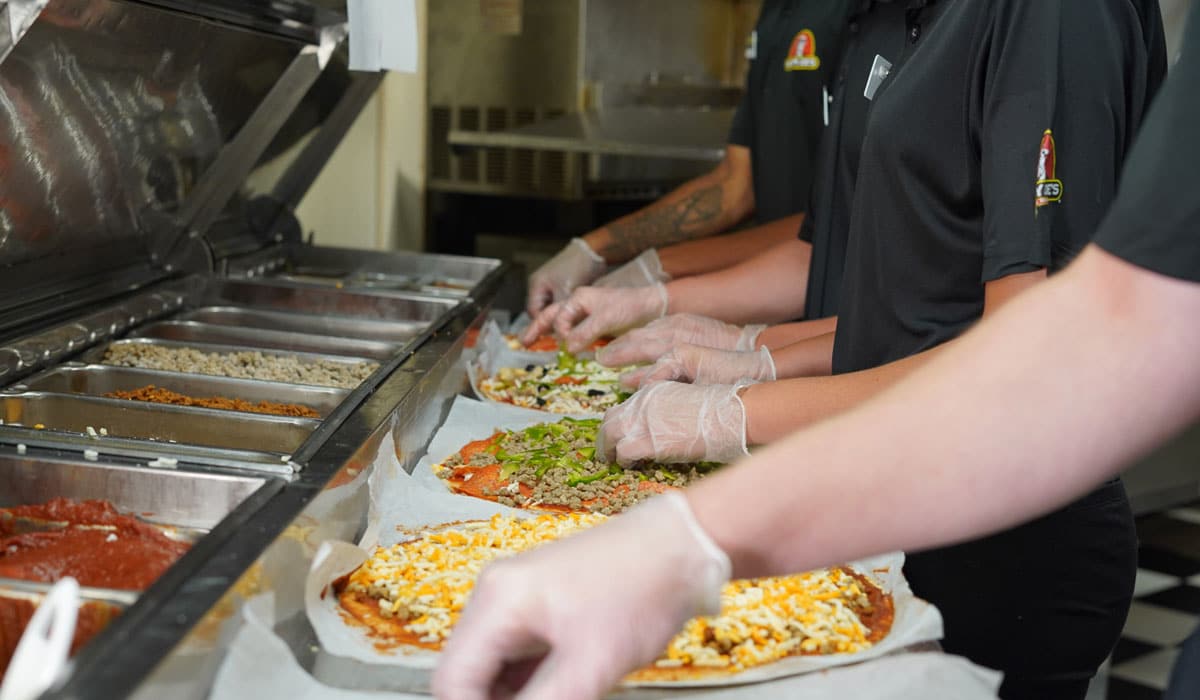As with most restaurant categories, quick-service restaurants are making a renewed push for expansion and growth as the pandemic wanes and the economy reopens. However, quick-serves are finding it difficult to hire non-managerial staff to reboot and scale operations to pre-pandemic levels.
Here are five critical workplace technologies that quick-serves should put in place to improve restaurant worker experience.
Improve security at the work location
The security landscape in the industry has gone through significant changes during the pandemic. With the reopening of the economy, customer pushback against restaurants’ masking and vaccine policies has increased exponentially. Violent behavior, abusive language, verbal threats or even assaults demoralize a workforce already under pressure and contribute to high attrition rates.
Brands can address this challenge by upgrading to an interactive video monitoring solution that will allow employees to speak to a remote security professional at the push of a button. Strategically placed speakers and microphones in addition to the security cameras can provide a virtual security blanket for employees.
Upgrading alarm solutions to include video verification of alarm events will eliminate situations where senior employees are forced to check in on the location in the dead of the night with the ever-possible threat of being confronted by armed robbers or burglars.
Offer a safe and hygienic work environment
Cleanliness in every part of the restaurant operation is essential to mitigating health risks for both patrons and employees. To help meet health and safety requirements and ensure compliance, quick-service restaurants can implement interactive remote audits for policy enforcement. Trained professionals can monitor restaurant locations via security cameras and alert employees to possible safety issues and compliance gaps.
Video analytics solutions can also be implemented to monitor occupancy data to flag possible maximum occupancy issues, mask compliance, and monitor compliance with social distancing.
Empower employees with better tech infrastructure
Millennials and Gen Z workers are tech-savvy and expect technology to make their work easier and less mundane. According to the State of Work 2021 by Adobe, before COVID-19, about 22 percent of workers surveyed had claimed they had quit their jobs because workplace technology made their jobs challenging. Today, over 32 percent of workers claim they will quit if technology at work becomes a bottleneck to performing their job.
Network speed and reliability issues have a spiraling effect on employee productivity and customer satisfaction. Critical quick-service restaurant applications like the point of sale (PoS) system, digital menu boards, online ordering, tableside apps, and inventory management are increasingly being delivered via the cloud. Without reliable connectivity, employees waste time troubleshooting technical issues they are not trained to handle and have to deal with irate customers who are frustrated by connectivity issues.
Long John’s Silvers addressed this challenge by transforming their network and phone infrastructure across 400-plus locations and implementing a standardized restaurant-technology-in-a-box.
Employees no longer have to take on cumbersome work associated with the manual processing of payments or spend hours on the phone with the technical support teams to troubleshoot network issues. Improved network speeds, redundant connectivity, proactive management, and remote diagnostics translate into a better customer experience and happier employees who have the tools they needed to ensure a consistent customer experience.
Get more from productivity tools
Brands are operating in a highly competitive market and employee productivity is a key factor that determines the long-term success of a brand. What’s good for employee productivity is great for business. With productivity tools, quick-serves can get more work done with limited staff and employees can focus on high-value activities resulting in increased job satisfaction.
For example, giving quick-service restaurant employees the ability to communicate with all customers via text messages using a single published business phone number can be a game-changer. When you add connected Tablets into the mix, teams of employees can track and respond to customer messages on wait times for curbside pickup or special requests. The value of this function increases exponentially when the text messaging app is also integrated with the PoS and online ordering solutions. The possibilities are endless when restaurants look to leverage valuable data that may be residing in silos across productivity applications.
Provide actionable training and insights
Poorly trained employees don’t stick around long and can cost the business revenue in addition to driving down customer satisfaction. Giving away products for free, using more ingredients than needed, not paying attention to customer requests resulting in remaking items, or issuing unnecessary discounts are just a few of the issues that chains cannot afford.
Quick-serves can deliver better training and insights for employees by integrating security camera feeds with the POS application to identify training opportunities for employees. For example, incorrect usage of discounts or coupons, handling customer disputes or chargebacks, and complying with safety regulations can all become invaluable sources of training.
Providing performance reports directly to employees with objective data is a powerful tool and provides guidance on areas for improvement or to allow recognition of stellar performance. Objective metrics take the guesswork out of communicating with employees on performance for managers as well, providing a more collaborative and cheerful workplace. Clear expectations, consistent feedback, and a fair and equitable work environment translates to happy employees, which will inevitably result in a more positive customer experience.
Steve Womer is the Vice President of Customer & Solutions Engineering Interface Security Systems. Steve has been designing and supporting secure network infrastructure solutions for distributed enterprise brands for the past 17 years. His current mission at Interface Security Systems is to ensure customer solutions are built with the highest levels of security and performance with an overarching theme of standardization and scalability.













